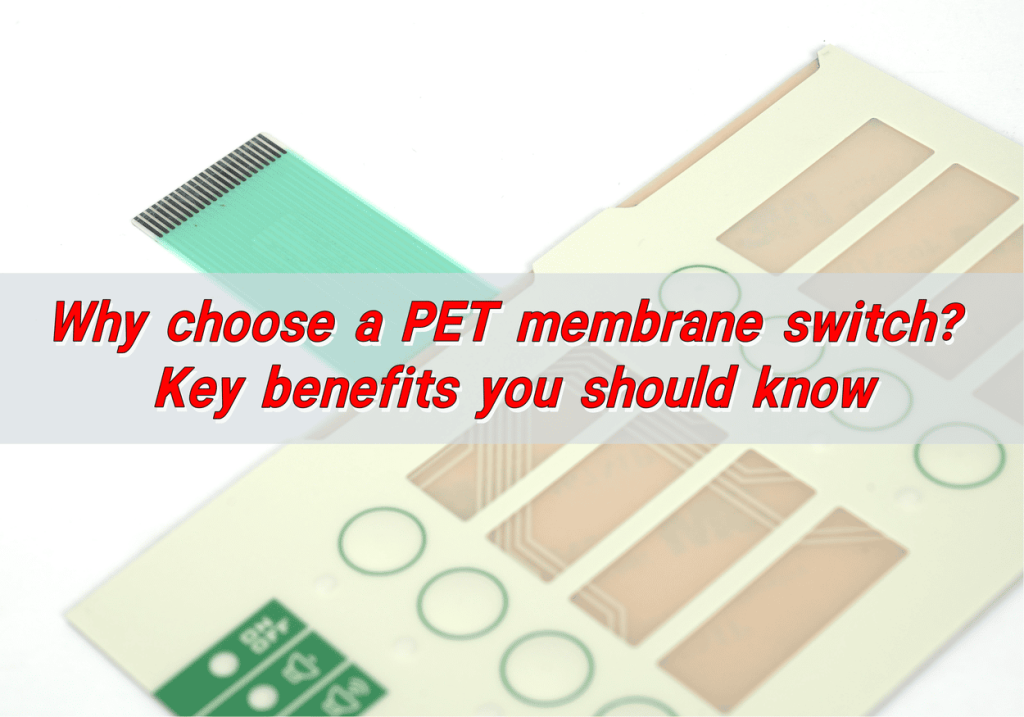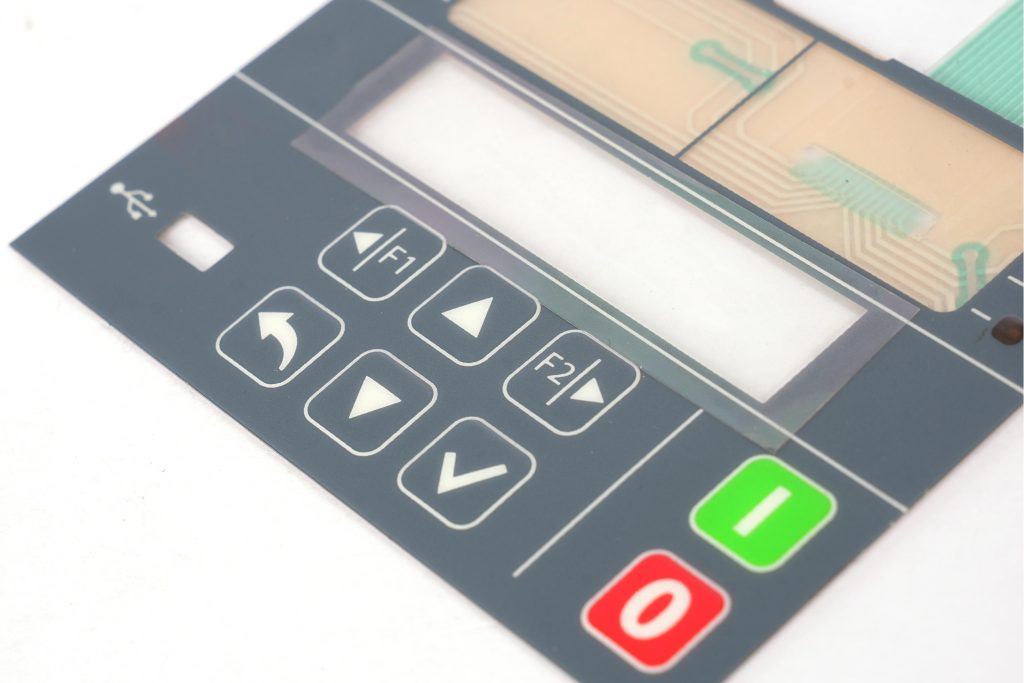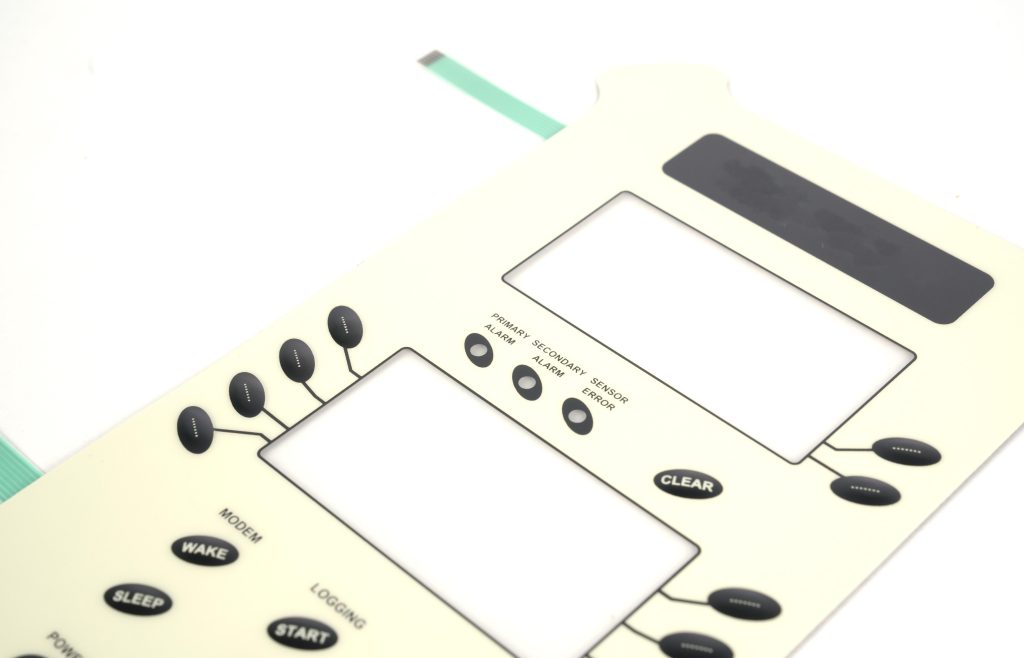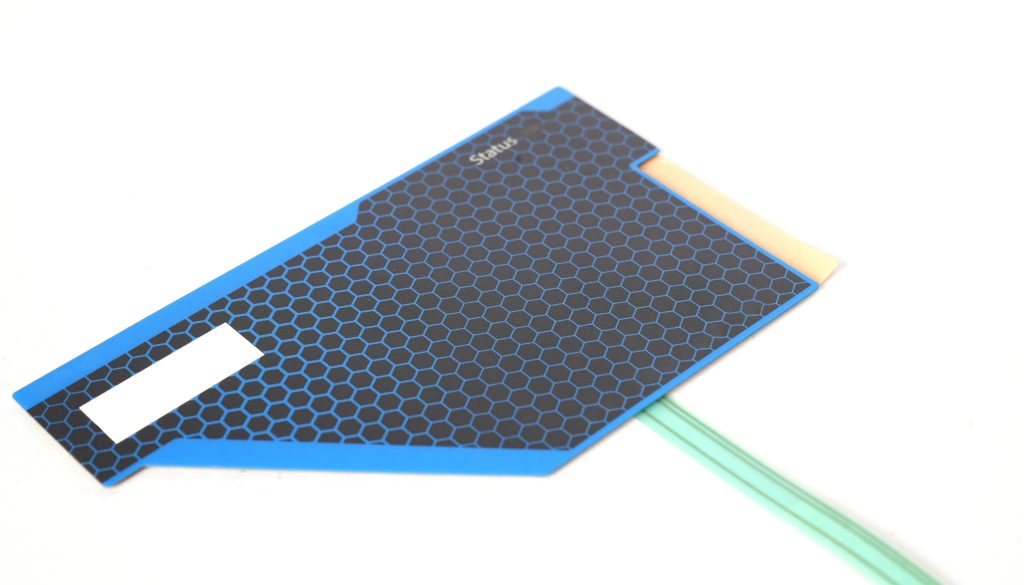
Why choose a PET membrane switch? Key benefits you should know
Why choose a PET membrane switch? Key benefits you should know
PET membrane switches have good key life, corrosion resistance, wear resistance, and excellent insulation performance, and are suitable for key parts that are used frequently. They have high hardness and can withstand large key forces, ensuring long-term stability. In addition, PET membrane switches have good temperature resistance and can operate in a temperature range of -30℃ to 120℃, adapting to a variety of environmental conditions.

What is a PET membrane switch?
PET membrane switch is a type of thin, flexible, and lightweight switch that uses polyester (PET) as its main material. It consists of multiple layers, including graphic overlays, adhesive spacers, and conductive circuits.
Compared to other switch types, PET membrane switches offer a smooth operation, low-profile design, and excellent resistance to moisture, chemicals, and wear. They are used in a wide range of industries, from consumer electronics to aerospace.
Why choose a PET membrane switch?
PET membrane switches are a great choice for applications that require reliability, cost-effectiveness, and durability. Their unique design makes them ideal for environments where space is limited, and exposure to harsh conditions is common.
Unlike traditional mechanical switches, PET membrane switches have no moving parts. This means fewer chances of wear and tear, leading to a longer lifespan. Their sealed construction also protects them from dust, water, and chemicals, making them suitable for outdoor and industrial applications.
Additionally, PET membrane switches offer design flexibility. They can be customized with various colors, textures, and backlighting options. Whether you need a simple interface or a complex control panel, PET membrane switches can be tailored to fit your specific needs.
What are advantages of PET membrane switch?
- Cost-Effective: PET membrane switches are more affordable than other switch types.
- Durable and Long-Lasting: These switches can withstand repeated use without losing performance.
- Lightweight and Flexible: Unlike bulky mechanical switches, PET membrane switches are slim and lightweight.
- Moisture and Chemical Resistant: PET material resists moisture, chemicals, and harsh environments.

- Customizable: From backlighting options to embossed keys, PET membrane switches can be fully customized to enhance user experience.
- Easy to Clean: The smooth, sealed surface prevents dust and dirt buildup. Cleaning is simple, requiring only a soft cloth and mild cleaner.
- Reliable Performance: With consistent actuation force and response time, PET membrane switches provide a smooth and accurate user experience.
What are disadvantages of PET membrane switch?
Although PET membrane switches have many advantages, they also have some limitations. However, these drawbacks can often be managed with proper design and usage.
One limitation is their lower electrical conductivity compared to flexible printed circuit (FPC) switches. PET circuits use silver-based conductive inks, which may degrade over time in extreme conditions.
Another disadvantage is their lower mechanical strength. PET is not as robust as polyimide (used in FPC switches), meaning it may not be the best choice for applications requiring extreme durability. However, in most cases, PET membrane switches provide sufficient strength for daily use.
PET membrane switch VS FPC membrane switch
When comparing PET membrane switches to FPC membrane switches, the main differences lie in material, durability, and cost.
- Material: PET switches use silver-based conductive inks, while FPC switches use copper circuits on polyimide substrates.
- Durability: FPC membrane switches handle extreme temperatures and mechanical stress better than PET switches.
- Cost: PET membrane switches are significantly cheaper than FPC alternatives, making them a more economical choice for many industries.
- Customization: Both PET and FPC membrane switches allow customization, but FPC designs offer more advanced circuit options for complex applications.
For most general applications, PET membrane switches offer the best balance of performance, cost, and durability. If high conductivity and extreme durability are required, FPC switches may be a better choice.
What are application of PET membrane switch?
PET membrane switches are widely used in various industries due to their versatility and reliability.
- Medical Devices: Used in hospital equipment, diagnostic tools, and monitoring systems due to their hygienic and easy-to-clean surface.
- Industrial Controls: Ideal for factory equipment, control panels, and automation systems where durability is essential.
- Consumer Electronics: Found in remote controls, household appliances, and fitness equipment.

- Automotive Industry: Used in dashboard controls, navigation systems, and car keypads.
- Aerospace and Defense: Suitable for cockpit controls, communication devices, and rugged military equipment.
- Retail and POS Systems: Found in cash registers, vending machines, and self-service kiosks.
With their ability to withstand moisture, chemicals, and repeated use, PET membrane switches are a reliable choice across multiple industries.
How to design a reliable PET membrane switch?
To ensure a PET membrane switch performs well, proper design and material selection are crucial.
- Material Selection: Choose high-quality PET film and conductive ink to enhance durability and conductivity.
- Circuit Design: Optimize the layout to minimize resistance and improve performance. Proper spacing between conductive traces prevents short circuits.
- Adhesive Selection: Use strong adhesives that can withstand environmental stress.
- Backlighting Options: If visibility is important, consider LED or fiber optic backlighting for better readability.
- Tactile Feedback: Adding embossed buttons or metal domes improves the user experience by providing a responsive feel.
- Environmental Protection: Apply protective coatings to prevent oxidation and degradation of conductive ink.
- Testing and Quality Control: Conduct rigorous testing to ensure reliability under different conditions, including temperature and humidity variations.
By focusing on these design elements, a PET membrane switch can deliver long-lasting and high-performance results.
How long do PET membrane switches last?
The lifespan of a PET membrane switch depends on its design, materials, and usage conditions. On average, these switches can last up to 1 million actuations, making them suitable for applications that require frequent use.
Factors like humidity, temperature, and exposure to chemicals can affect longevity. However, with proper protective coatings and material selection, PET membrane switches can maintain performance for years.

Compared to mechanical switches, PET membrane switches have a longer lifespan due to their lack of moving parts. This reduces mechanical wear and increases reliability.
Conclusion:
PET membrane switches offer an excellent balance of affordability, durability, and customization. They are widely used across industries due to their lightweight design, resistance to harsh environments, and long lifespan.
If you’re considering a PET membrane switch for your project, choosing the right design and materials is key to maximizing performance. Need expert guidance? Contact sales@best-membraneswitch.com for professional advice and customized solutions.

What is a Membrane Switch Panel? A Complete Guide
Membrane switch panel is a thin, beautiful electronic component that integrates key functions, indicator components and instrument panels. It consists of a panel, an upper circuit, an isolation layer and a lower circuit. When pressed, the upper circuit contacts and the lower circuit are connected. When released, the contact rebounds and the circuit is disconnected. ...
Custom Silicone Rubber Membrane Switch & Rubber Keypad
Silicone rubber membrane switch is a membrane switch made of silicone rubber material, which has the advantages of silent operation, high temperature resistance and stable chemical properties. It changes the structure of the traditional touch switch using metal shrapnel and uses silicone rubber as the conductive material, so it is also called a silent touch ...

What is a PCB Membrane Switch? PCB Switch Types
PCB membrane switch is a switch based on rigid circuit board, suitable for application scenarios that require stronger mechanical stability and reliability. It is usually composed of multiple layers of film, including conductive film, circuit breaker film and display film, etc., and the circuit is turned on and off by touch or press operation. The ...
Contact us online